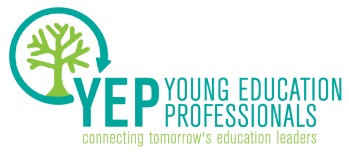 Photo by Flickr user matsber.
Photo by Flickr user matsber. Although he is certainly correct that the most persuasive case for pre-K is the long-term benefit it confers on students who attend such programs, Whitehurst’s definition of “long-term” seems to be lacking. The difference between pre-K and first-grade outcomes seems to be, instead, an example of short-term, academic outcomes. The types of long-term benefits typically touted by proponents of pre-K programs are adult outcomes, such as college enrollment and completion, arrest rates, and income levels. Of course, such results are not yet available for the Tennessee study, which began in 2009. Nevertheless, Whitehurst dismisses the hopes of the Peabody researchers that later benefits might emerge for students in adulthood: “This seems to me to be grasping at straws, given the lack of any differences among participants and non-participants in teacher rated social/emotional outcomes, and given other research showing no association between kindergarten retentions and later school performance.”
This is the frustrating thing about Whitehurst’s analysis of preschool programs. He has been quick to dismiss broadly influential studies, such as the Perry Preschool Study, for doubts over their generalizability, and he is willing to discount studies that use age-cutoff regression discontinuity designs because of the potential for selective attrition. Yet he is comfortable with disregarding the possibility that the benefits of pre-K might emerge in adulthood based on research that addresses the impact of retention on later elementary academic performance. (Let's also not forget that the proposed mediating factor of such long-term benefits is not academic performance, but rather the development of non-cognitive skills.) And the researchers expressly warn, “It is too early to expect such effects to appear with any consequential magnitude.” Thus dismissing the possibility of future emergence of these non-cognitive benefits seems unwarranted, especially given the particularly high standard of proof Whitehurst usually demands.
Indeed, the trend of test score convergence in later grades between students with varying amounts of early childhood education is fairly typical. And given Whitehurst’s objections to the older, “boutique” programs, it is important to recognize that this trend is not limited to the Perry Preschool or Abecedarian studies. One recent review of the evidence base for pre-K found the same pattern among studies of Head Start programs. As they explain, “...even though Head Start participants have test scores that look similar to other children by early to mid elementary school, these studies show that Head Start children wind up completing more years of schooling, earning more, being healthier, and (in at least some studies) may be less likely to engage in criminal behavior.” Similarly, another study looked at more than 11,000 students randomly assigned to kindergarten classrooms of varying quality as a part of Tennessee’s Project STAR and found that although test scores eventually converged, significant differences persisted in earnings, college attendance, and retirement savings.
The evidence of such an effect across time and program type supports the possibility of persistent positive effects of early education that last into adulthood despite the disappearance of a comparative advantage on academic measures. Indeed, such a pattern seems to confirm the intuitive appeal of such programs; because development is so rapid among young children, it doesn’t seem unreasonable to expect the effects of early life experience to persist in ways that later experiences do not. Put another way, our conventional understanding readily accepts the possibility that what happens to you as a young kid sticks with you into adulthood, so it should not surprise us if that is precisely what happens with pre-K.
Nor is it hard to see why, within this framework, test scores might converge between participants and non-participants. One common explanation for this effect is that because teachers in later grades have students at a variety of academic levels, they tend to teach the things the least advanced students have yet to learn, often repeating material the more advanced students have already learned. As Sara Mead puts it, “Measures of elementary learning aren't measuring an innate quality of children; they're evaluating what children know and can do because they've learned it. And what children learn in kindergarten and first grade depends on what and how well they are taught in those grades.” In such a context, it is hard to see how these students could continue to advance academically -- but it is easy to see how their social and non-cognitive development could continue. Even when students’ academic environment is poor in new academic experiences, they can be exposed to a fairly rich social and behavioral environment full of new opportunities to interact with peers and learn to manage and direct their own behavior.
Ultimately, Whitehurst’s is an all too common fallacy of early childhood education analysis. If most of the potential benefits are to be reaped in the long term, assessing these programs on their short-term outcomes is insufficient (though not, of course, irrelevant). Unfortunately, contemporary research will need to wait until children age into adulthood before it can provide more evidence about the long-term effects of early childhood education. But because considerable evidence suggests that such benefits might reasonably be expected, those assessing the value of such programs must not lose track of the long term.
CJ Libassi, a former teacher, is a public policy graduate student at the University of Michigan. Reach him via email or Twitter.

 RSS Feed
RSS Feed